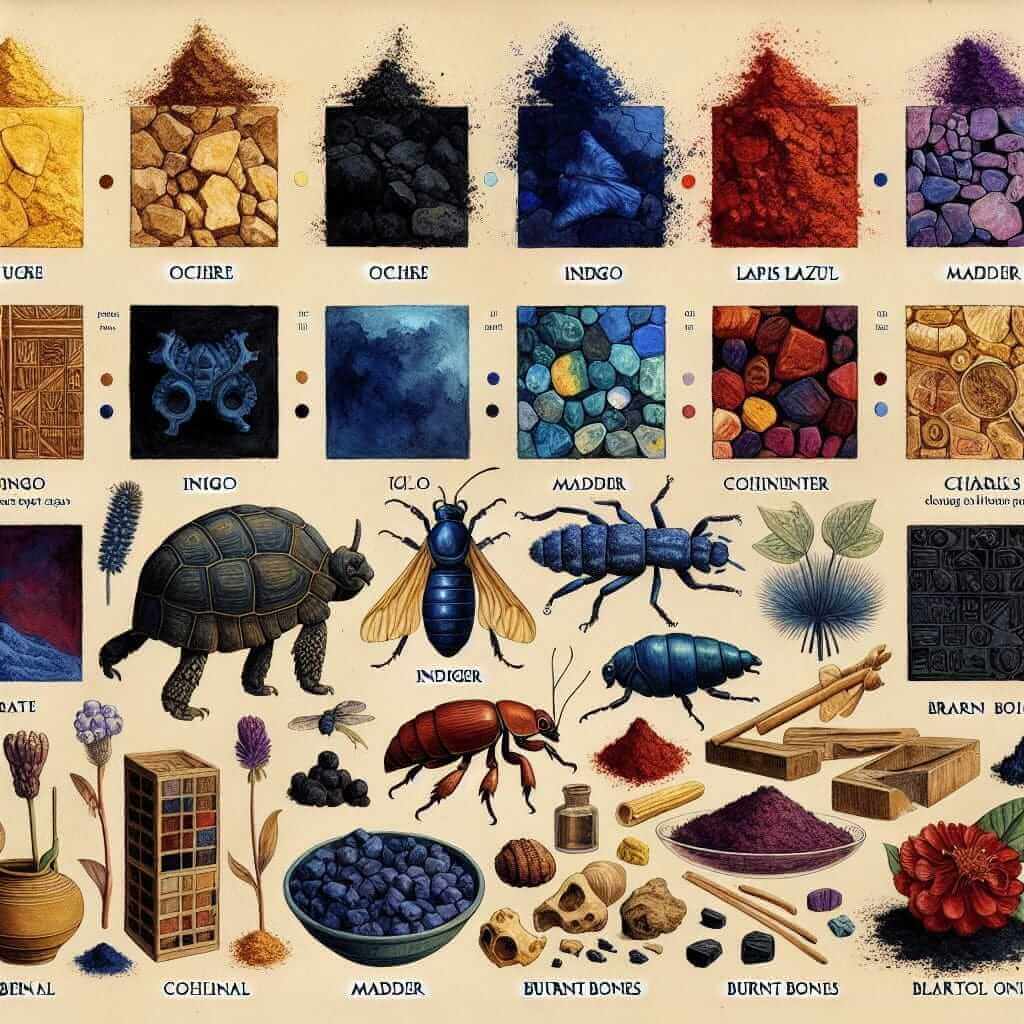As an IELTS instructor with over 20 years of experience, I often encounter students fascinated by historical topics, particularly when it comes to art and culture. One such topic that frequently appears in the IELTS Speaking test is the creation of pigments in ancient times. This essay delves into the significance of understanding this historical process within the context of the IELTS exam, providing you with the knowledge and vocabulary to impress your examiner.
Why is Knowing About Ancient Pigments Relevant for IELTS?
The IELTS Speaking test assesses your ability to communicate effectively on a range of topics. Questions about history, art, and culture are common, and understanding how pigment was made in ancient times allows you to:
- Demonstrate knowledge: Showcasing your understanding of historical processes reflects well on your overall knowledge base.
- Utilize specific vocabulary: Discussing this topic allows you to use specialized vocabulary related to art, history, and chemistry. Words like “ochre,” “vermilion,” “lapis lazuli,” “grind,” “extract,” and “bind” are just a few examples.
- Develop complex ideas: Explaining the intricate processes involved in pigment creation demonstrates your ability to articulate complex thoughts and concepts.
How Were Pigments Made in Ancient Times?
The creation of pigments in antiquity was a labor-intensive process, often involving:
1. Sourcing Materials:
Ancient artisans sourced pigments from a surprising variety of natural materials:
- Minerals: These were ground down to create pigments like ochre (yellow, red), cinnabar (red), and lapis lazuli (blue).
- Plants: Indigo (blue), madder (red), and weld (yellow) were extracted from plants.
- Animals: Cochineal insects produced a vibrant red dye, while sepia ink came from cuttlefish.
- Other Sources: Charcoal (black) and burnt bone (black, white) provided additional options.

2. Processing and Grinding:
Once collected, the raw materials were often processed to enhance their colour or longevity:
- Grinding: Minerals were ground into fine powder using mortars and pestles.
- Extraction: Plant and insect dyes required boiling or soaking to extract the colour.
- Mixing: Different materials were sometimes combined to achieve specific hues.
3. Binding the Pigment:
To transform the powdered pigment into usable paint, a binding agent was essential:
- Oils: Linseed and walnut oil became popular binders later in history.
- Egg Tempera: Egg yolks, a common binder in ancient Egypt, created a durable paint.
- Plant Gums: Acacia and tragacanth gums were also used as binders.
Example in IELTS Speaking:
Imagine encountering this Part 2 Speaking cue card:
Describe a time you learned about a traditional skill or craft.
You could discuss the creation of pigments in ancient times, highlighting the resourcefulness and artistry involved. Use vivid language to describe the vibrant colours extracted from minerals, plants, and insects. Explain how these pigments were ground, mixed, and bound to create lasting works of art.
Tips for Success:
- Expand your vocabulary: Research and learn specific terms related to pigment creation and art history.
- Practice speaking: Rehearse describing the process of pigment creation in your own words.
- Connect to broader themes: Think about how this topic relates to themes of cultural exchange, technological advancement, and human ingenuity.
By understanding the history of pigment creation, you’ll be well-equipped to tackle a variety of IELTS Speaking prompts with confidence and flair. Remember, the key is to demonstrate your knowledge, use specific vocabulary, and communicate your ideas clearly and effectively.